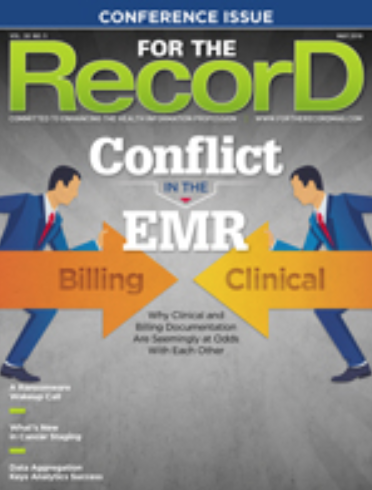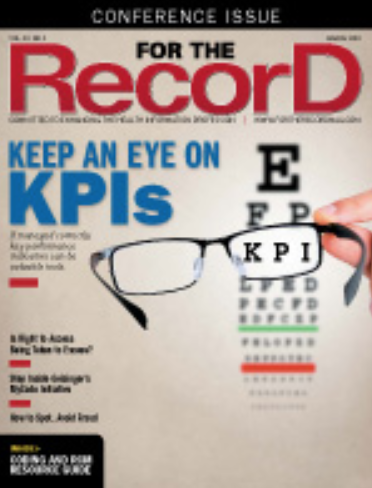News

Conflict in the EMR
The foundational objective of any clinical documentation improvement (CDI) program is to produce the most complete and accurate documentation possible. It seems a reasonable goal, yet the industry at large continues to struggle with achieving a balanced documentation product that adequately supports both billing and clinical information needs.

The Price of EHR Downtime
As hospitals step up adoption of advanced EHR systems and applications that draw from the technology, the cost of unplanned downtime has escalated rapidly, rising an estimated 30% in the past seven years to more than $634 per physician per hour. That’s according to Mark Anderson, CEO of AC Group, whose 2011 study placed the average cost of system downtime at $488 an hour per physician

Bacteria taints 71 percent of commonly used medical scopes, study finds
In an ominous sign for patient safety, 71 percent of reusable medical scopes deemed ready for use on patients tested positive for bacteria at three major U.S. hospitals, according to a new study.
The paper, published last month in the American Journal of Infection Control, underscores the infection risk posed by a wide range of endoscopes commonly used to peer deep into the body

EHR Implementations: Don’t Be Left Out
Lost in the shuffle of minding budgets, keeping the C-suite happy, and ensuring schedules are met, there’s another often-overlooked reality of any EHR implementation: HIM professionals—the legal guardians of the health record—must be key participants in any process involving the integrity of patient records.
While this is undoubtedly true, it isn’t necessarily the reality at most health care organizations. For various reasons, HIM professionals are frequently left out of the EHR implementation process.

Fake News About Health You Need to Stop Believing
Thousands of well-educated people share erroneous beliefs. With the help of my father, Jack Gorman, M.D., I began to explore why people develop these mindsets and wrote the book Denying to the Grave: Why We Ignore the Facts That Will Save Us. You’re about to learn the neurological basis for how such thinking “narrows” the brain and how to reverse the process in yourself and others. But first, let’s take a look at six prevailing health myths that some people still believe.

Why Some Americans Are Risking It and Skipping Health Insurance
Prices and deductibles are rising. Networks are shrinking. And even some well-off Americans are questioning what they’re paying for. While the share of Americans without health insurance is near historic lows four years after the Affordable Care Act extended coverage to almost 20 million people, the Trump administration has been rolling back parts of the law. At the same time, the cost for many people to buy a health plan—if they don’t get it from a job or the government—is higher than ever.

What happens when a patient says, ‘Doc, help me die
My 54-year-old patient was alone in the intensive care unit, with no family or friends in his life. He slumped in his bed, gasping, staring up at me. Admitted with lung fibrosis and pneumonia, he had scars and infection aggressively replacing his airways, despite our best treatments.

The Doctor of the Future
When patients go to see Dr. C.T. Lin for a checkup, they don’t see just Dr. Lin. They see Dr. Lin and Becky.
Becky Peterson, the medical assistant who works with Lin, sits down with patients first and asks them about their symptoms and medical history—questions Lin used to ask. When Lin comes in the room, she stays to take notes and cue up orders for tests and services such as physical therapy. When he leaves, she makes sure the patient understands his instructions.

How Workplaces Are Improving Employee Health — And What Millennials Can Do To Help
Employee health has always had a big impact on overall company performance, but we’re only now starting to take more proactive action. Poor employee health can cost businesses upwards of $225.8 billion each year, or $1,685 per employee, which includes lost productivity, time off work due to illness, and additional healthcare costs.

Is Texting Physician Orders 2G2BT?
First it was banned, then it was given the green light. Now, it’s been banned again. What’s the future look like for text messaging PHI in a health care environment?
Text messaging has become so ingrained in our daily lives that it’s hardly a surprise the communication tool has made its way into the medical industry. While text messaging holds promise to improve care processes, it also is a major privacy concern with skeptics concerned about the consequences of physicians and nurses text messaging physician orders and other protected health information (PHI) on a regular basis.
